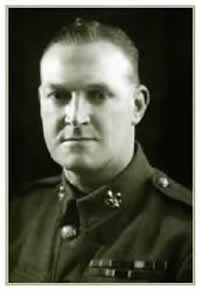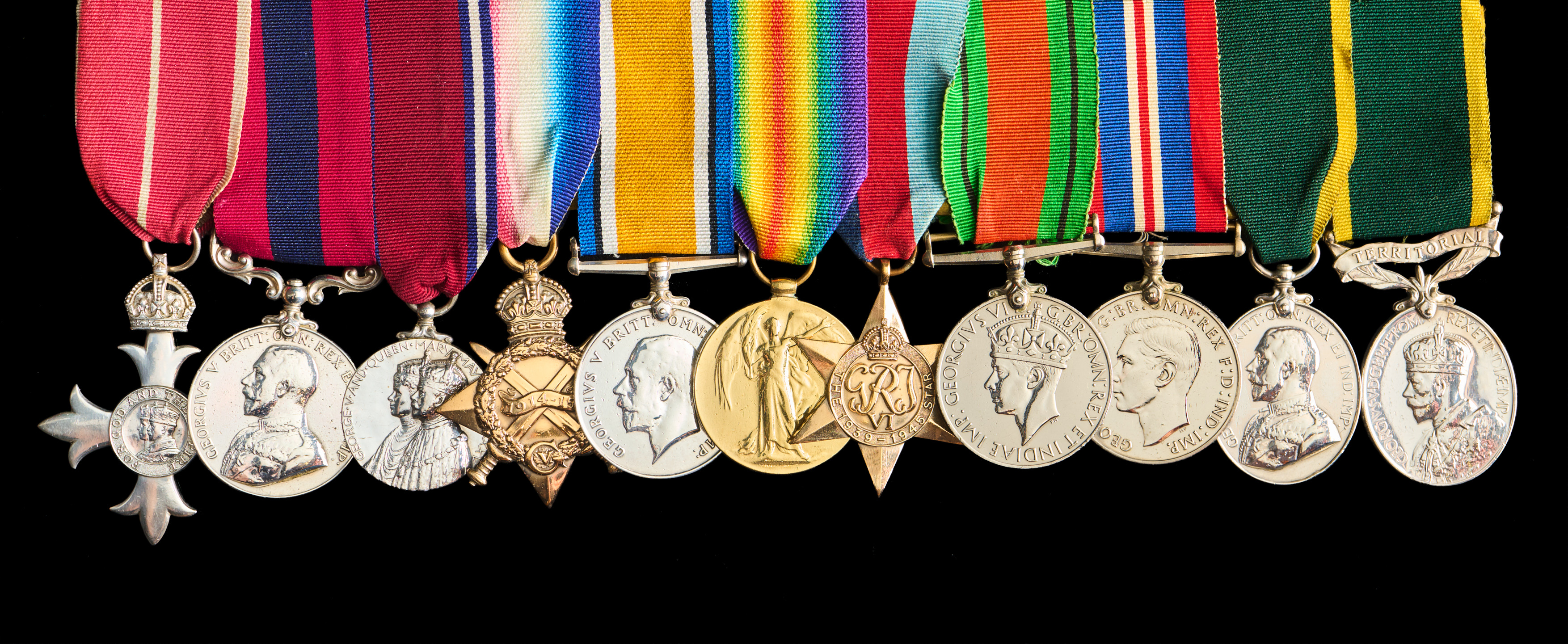

(L to R) MBE; Distinguished Conduct Medal; George V Silver Jubilee Medal; 1914-15 Star; British War Medal; Allied Victory Medal; 1939–45 Star; Defence Medal; War Medal 1939–45; Territorial Force Efficiency Medal; Territorial Efficiency Medal
Harry was born in 1899 in Ashton-under-Lyne. His father Joseph and mother Ellen both worked in a cotton mill. In 1891 they were living at 41 Mount Street and by 1901 they had moved to 90 Church Street. Harry had an older sister called Adelaide, and two younger brothers called William and Joseph. Harry and his siblings all worked in in the local cotton industry. Harry later worked at R.A. Barrett & Co, a mineral water manufacturer based in Ashton-under-Lyne.
Harry enlisted in the Army with the 3rd (Volunteer) Battalion of the Manchester Regiment on the 11th March 1906. This was re-designated the 9th Battalion (Territorial Force) in 1908 and he was given the service number 969. Harry trained as a soldier at evenings, weekends and attended various training camps. He was promoted to Lance Corporal in 1909 and Sergeant in 1912.
At the start of the First World War Harry was ‘embodied’, or mobilised for war service. The 9th Battalion became known as the 1/9th Battalion, a ‘first line’ territorial unit for overseas service. At some point he was given the new service number 350074.
Harry arrived in Egypt in September 1914, and then landed in Gallipoli in May 1915. He was awarded the Distinguished Conduct Medal for his actions during the Gallipoli Campaign. On night time reconnaissance missions he provided accurate distances for artillery bombardments of newly-dug Turkish defences. The medal citation stated,
For conspicuous gallantry and ability South of Krithia, Gallipoli Peninsula, on the 10th and 11th July 1915, when making a reconnaissance of the enemy’s new trenches under very dangerous circumstances. He gained valuable information and located exactly the hostile positions.
Harry was wounded when a bullet hit his neck during the Battle of Krithia Vineyard on the 7th-9th August 1915. During a 40-hour period of fighting 20 men held off determined enemy attacks. This close-quarters fighting involved throwing bombs of various types at the enemy, including improvised ones made from jam tins.
Harry was evacuated on hospital ships to Alexandria, and then taken to the New Zealand hospital at Port Said. The bullet was extracted quickly, but an infection entered his gums causing abscesses which meant the removal of 5 teeth.
He re-joined his battalion in Egypt. He was promoted to Warrant Officer Class 2 in May 1917. He returned to the UK in August. He married Annie Norton in Ashton in 1918.
Harry stayed in the Army and continued to serve with the 9th Battalion. He was one of eight representatives who were present at Buckingham Place on the 16th May 1930 when King George V became Colonel-in-Chief of the Manchester Regiment.
In February 1935 he was appointed Regimental Quarter Master Sergeant, a position he held until he retired in September 1943. On the outbreak of the Second World War in 1939 he proceeded to France with the battalion and was evacuated from Dunkirk in June 1940. He was on home service until his retirement in 1943.
He was made an honorary secretary of the 9th Battalion Old Comrades Association and administered charitable funds on their behalf until ill health restricted his activities. For his long service to the Territorial Army he was made a Member of the Order of the British Empire (MBE). This was announced in the London Gazette on the 11th of May 1937.
Harry Grantham died in 1959 and he is buried in Dukinfield.
In recognition of his service to the Ashton Territorial Force he was awarded a Blue Plaque which was unveiled on the 30th October 2000. This is located on the wall at the front of the Territorial Army Centre in Ashton-Under-Lyne, previously the Drill Hall of the 9th Battalion Manchester Regiment.
His medals were acquired for the collections with grant aid from AMOT (Army Museum Ogilby Trust) in 2019.




